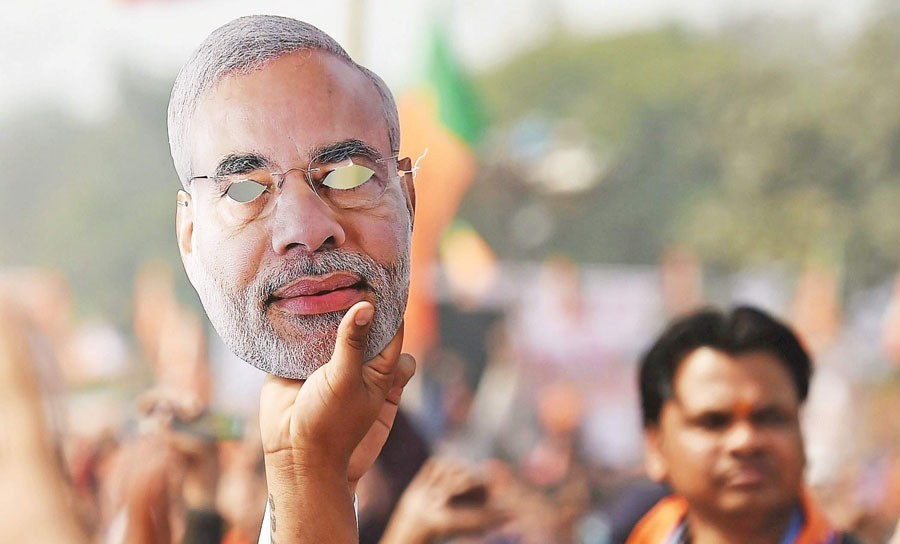
In India today, old class, caste, gender and status hierarchies are being rent asunder

What happened to tolerance and pluralism in India? The first answer to this question is that India’s famed tolerance and pluralism has always been over-stated; an exaggeration which has drawn on real traditions of tolerance and pluralism but which has conveniently papered over all that is intolerant, discriminatory and cruel in our past and present.
When the Indian state promised its citizens fundamental rights, democracy, social justice, secularism and the rule of law, it was merely "a tryst with destiny". It was a promissory note the leaders of the freedom struggle -- sitting inside the big tent of the Congress -- gave future generations that the colonial state and its institutions, now in control of the freedom fighters, will deliver all these and more.
Over the years, the track record has been mixed, at best. India was slow to start off the blocks on economic and social indicators of development, mired for long in the proverbial "Hindu rate of growth" of 3.5 per cent. However, there was a focus on industrialisation and self-sufficiency, which today holds the country in good stead. Since the 1980s, there was acceleration in both economic growth and in the improvement of social indices.
Just the literacy example would suffice. In the first census since Independence (1951) less than one in five Indians could read and write, or just about 65 million people. In 30 years (1981), 300 million (or 44 per cent) of India’s population of 683 million reported themselves literate. By 2011, there were 923 million Indians who could read and write; 200 million more than the entire population of the country three decades back.
Female literacy rose from less than 30 per cent of women to over 70 per cent between 1981 and 2011; literacy among dalits, who suffered untouchability, and tribals, too, has risen at rates faster than for the general population.
There have been similar changes in almost every other social indicator, just as India’s GDP has risen over ten times in the last three decades.
This does not imply that India has met its development goals. Far from it. Poverty, discrimination, and social indices remain at scandalous levels and there is enough evidence to show that government acts of omission and commission are equally responsible for this. However, to understand what is happening in India today we need to pair these literacy figures with people’s newfound mobility.
Not just that, there are now a billion Indians with a mobile phone, 450 million of them regularly access the net. Newspapers and magazines have been growing exponentially since the 1980s on the back of rising literacy, but so has higher education, where now women often outnumber men. People are also moving to unfamiliar geographies: the 2011 census tells us that 454 million Indians are internal migrants, living in a place different from their birth, an increase of 139 million in just ten years.
The newspeak of illiberal ideologies now promise a new moral anchor; the violence of the mobs a safe harbour for the anger at having been left behind.
Read also: The way history returns
This mobility is not just about phones and travel, but also about rising social status, breaking social hierarchies and bridging millennia old social divides. Inter-caste and inter-religious marriages are growing at rapid rates, adding to inter-regional and inter-language unions of earlier.
Together with the staggering growth in the ability to read and write, to learn about the world at large, the ability to move from old homes for work and leisure and yet keep in touch with kith and kin and befriend strangers can be termed, without hesitation, as unprecedented in India’s history.
In short, what this means is that old class, caste, gender and status hierarchies are being rent asunder. Old social norms are being stretched to breaking point; old social forms no longer suffice to hold the new. This is a classic case of what sociologists call secularisation -- the breaking of traditional structures, which bind individuals to their communities, the undermining of old religious practices, the moral code for living profane life. But secularisation on steroids!
The old verities are gone. The old ways of living and working, of experiencing family comforts, of familiar geographies have disappeared or are fast vanishing. This is a brave new world for the neo-literate, the newly urbanised peasant, the woman who has broken out of gender roles, for the dalit who can ride a mare to his marriage.
The promises of justice, liberty, equality and fraternity made by India’s State and traditional political parties have come short of her expectations. The newspeak of illiberal ideologies now promise a new moral anchor; the violence of the mobs a safe harbour for the anger at having been left behind. There is no map of the deep currents that have risen to the surface, we all need to prepare for the coming storm.